Do you love to travel? Interested in blogging? Combine your passions with WordPress.
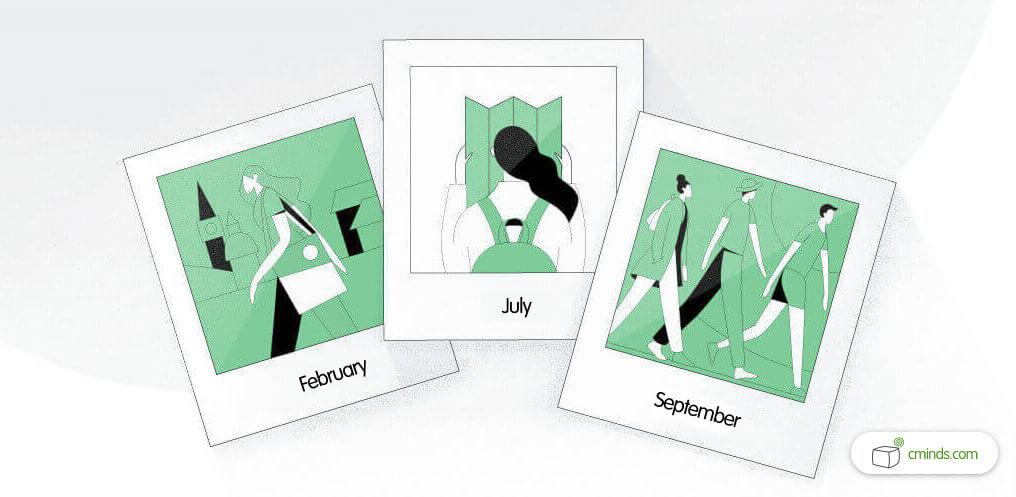
You might have a favorite travel blog in mind when you decide to travel the world. Your dream travel blog might have beautiful beach pictures or detail mountain hikes. It will encourage people to get out there and create their own adventures.
Why not create a blog that is as elegant and exciting as the one in your mind? You can do this with WordPress. In this post, we’ll give you some things to think about and tips to help.
First things first, it’s important what you want to get out of your travel blog. This will determine how you go about creating it.
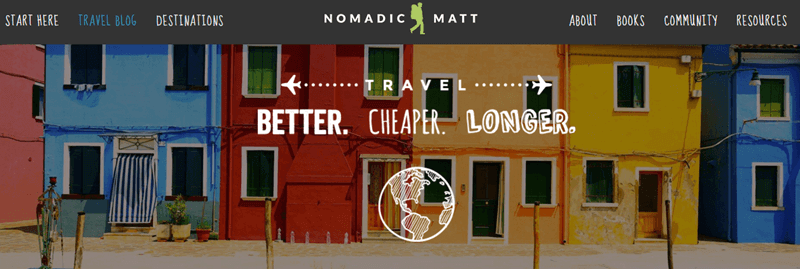
Popular travel blog Nomadic Matt
What do you want to show your site visitors? Food, people, places? Do you want to display where you’ve been and where you’re going? All of the above? Awesome!
The key to creating these different functions is using WordPress plugins. Default Wodrpress experience can be little limiting and you might look forward to expand your posibilities using wordpress plugins for travel website. The possibilities for what you can create with plugins are nearly endless. Whether you want to simply show people the cool things you’re doing or make money (or both), there are ways to do this with the right plugin.
While many of the general WordPress plugins are important for any type of site, there are special considerations and plugins that come in handy for those who take their readers to faraway places.
April 2025 Offer – For a Limited Time Only:
Get Map Routes Manager Plugin for 15% off! Don’t miss out!
Travel-Specific Considerations

In addition to knowing the ongoing cost of WordPress site, it’s important to recognize a few possible hurdles before deciding to create a travel blog:
- Access to Internet
Not having access to internet is a definite possibility as a frequent traveler. Maybe you’re in a remote area or spend a lot of time traveling on planes.
One option to keep working on your blog without an internet connection is to install WordPress locally on your computer with a solution like WAMP or MAMP. This creates a local version of your site. This is good for testing environments (for example, trying a new theme without affecting the live site) and for travelers.
Learn how to do this on Mac or Windows. It doesn’t take long! This way, you can work on posts without internet and easily transfer them to your live site when you run across an internet connection.
- Technology While Traveling
When traveling, you obviously can’t take your desktop along. You’ll need to consider what you’re able to bring with you. A laptop would be ideal, but you may need to rely on a smartphone or tablet to upload posts if you’re constantly on the go.
Often, finding an internet connection means using public internet or internet cafes. These places are notorious for hackers. Make sure your site is secure and ready to defend against hackers.
Although backups should be done for all sites, it’s especially important to do site backups if you’re traveling. (Tip: Make sure to back up pictures, too)
If you’re using a local WordPress installation, you will lessen the security risk because you’re not exposed to an unsecure network.
Check out our comprehensive security guide to learn how to amp up your site’s security.

Once you get into the swing of things with blogging on the go, you’ll settle into a flow that works for you.
Now that you know some important hurdles to overcome while traveling, we’ll go into some ways you can create a successful travel blog, whether you’re looking for a profit or just having fun.
Make Money by Traveling
Did you know you can make money from your travel blog? Of course there are paid ads, but there are also several other ways that may jive with that dream travel blog in your head. Maybe you offer tours of locations or write e-books and transform your WordPress site into an ecommerce store.
It’s also possible to make money on your travel blog by writing awesome content that makes jumping on a plane to that destination irresistible, then helping people find that flight. People are more likely go to a place if they have details about a location and all the great things about it in mind from reading your blog.
There are several plugins out there that add a travel booking capability to your WordPress site. One is TravelPayouts, a plugin with over 1,000 active installs and a 4.5/5 star rating.

This plugin is seriously cool. It lets you choose from 12 different widgets, tables, and forms site visitors can use to find deals on flights and hotels to different locations. For example, if you create a post about Madrid, Spain, you can add a map showing flights to this location available from different travel companies so your site visitors can find a good deal.

Flight pricing map
Not only does this help your visitors, you can earn commission from flights booked through your travel blog. Cool, right?
Cool Plugins for Travel Blogs
In addition to possibly integrating a way to make money, there are some more features you’ll need to make your travel blog a success.
Here are some important pieces to hit on when trying to build a travel blog and which plugins (free and affordable premium) address them:
- Images
Good images are important for travel blogs. Readers want to see your adventures, not just read about them. Make sure you have a way to take good pictures and display them on your blog in a way that makes them shine.
Simple Lightbox is a super popular free plugin (100,000+ active installs). It allows you to create a customizable light box for your site. A lightbox allows site visitors to see a larger version of an image without leaving the page they’re viewing. This allows readers to see every detail of your awesome photos.

This plugin is extremely easy to use and can be customized with different themes—no coding required. All you have to do after installing the plugin is add links to images on pages or posts. You can add image captions or create an image slideshow.
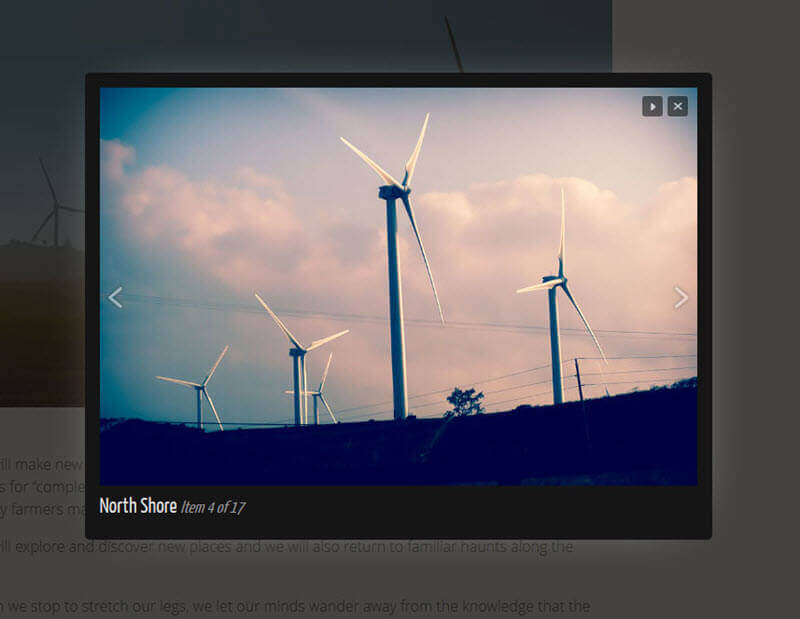
- Translate
If you’re traveling around the world, it makes sense that you might have visitors from different countries. If you notice a lot of visitors from a specific country, it might be nice to translate your site into the language of that country.
A popular way to do this is to use WPML plugin. This plugin comes with the capability to translate to over 40 languages and works with almost any theme. The blog version of this plugin is only $29, affordable for an easy solution to this problem.

- Food
Food is a common theme in travel blogs. Traveling affords the opportunity to taste food from all different places. Why not show off all the great restaurants you visit by adding an elegant menu to your site?
Food and Drink Menu is a free WordPress plugin that lets you create a stylish menu and display it in pages, posts, or widgets. You can display a picture, price, and review for different menu items. This can increase engagement with your travel blog and appeal to foodies everywhere.

Another possible way to make money from your travel blog when you have high traffic is writing reviews or promoting businesses, which could easily work with the food menu plugin.
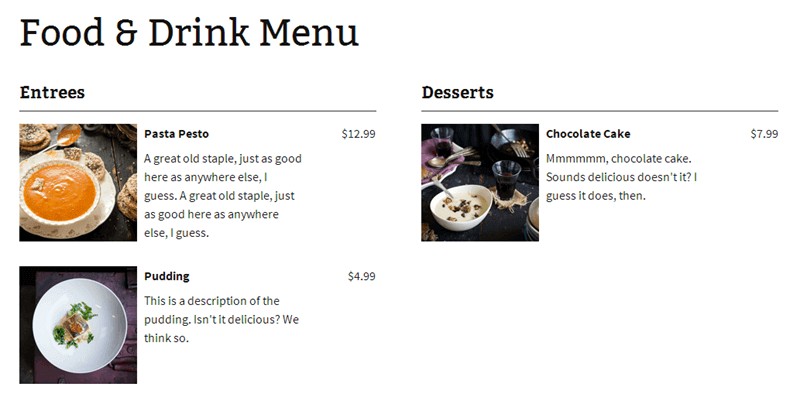
- Maps
If you’re moving around a lot, it is nice to show your travel route to readers in the form of a map. This makes it easy for people to follow along and feel like they’re engaged with the journey. There are several plugins out there to display routes on a map.
Of course, we love our CM Map Routes Manager. Here’s why:
With this plugin, you can show your larger route across countries or the globe, or highlight trails and routes in certain locations. For example, show nature trails you hiked or good running routes. You can show a route your visitors could take to get to a certain location. Once you easily create a route, you can display a map with that route or several routes on WordPress posts or pages.
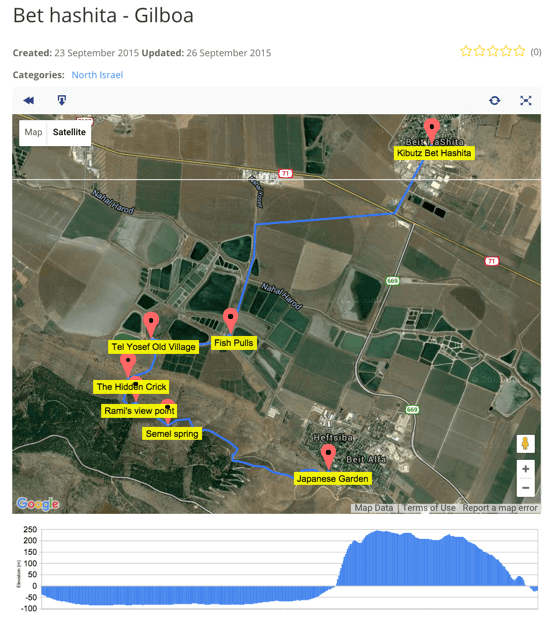
Route shown on satellite map
Each route can include pictures and details about individual locations, temperature and elevation notes, route distance and duration, and more. Readers can switch between driving, walking, and cycling routes, depending on their preferred mode of transportation. You can also group routes by different categories and choose which categories to show.
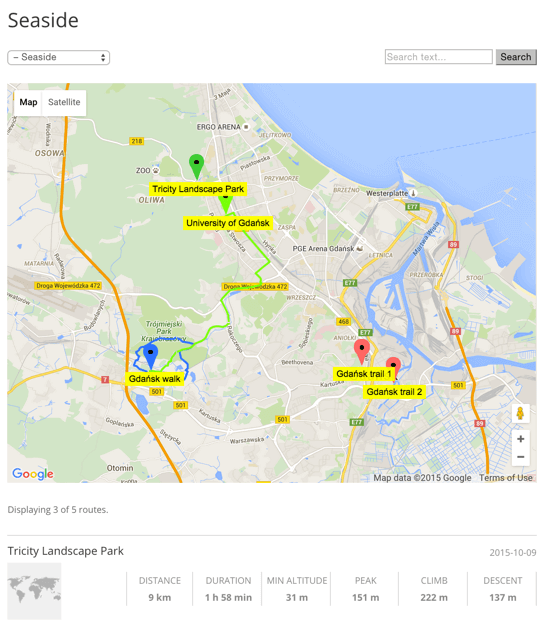
Several routes shown on map
Another advantage of this plugin is you upload routes recorded on your smartphone. Popular route tracking apps on smartphones like MapMyHike record routes in KML files. CM Route Manager allows you to upload these KML files to your WordPress site, saving time that could be spent exploring. This way you don’t have to remember every step of the route, but can focus on enjoying the adventure.
The possibilities for how to use this map plugin with a travel blog are endless, making it perfect for any adventure, whether it’s across the country or across the world.
If you’re looking to create a map of different locations you’ve traveled to, or locations you’re planning on traveling to, check out CM Map Locations. This plugin lets you add an interactive map with standalone locations that include detailed information and images. Each location can have a customized icon based on the type of location.
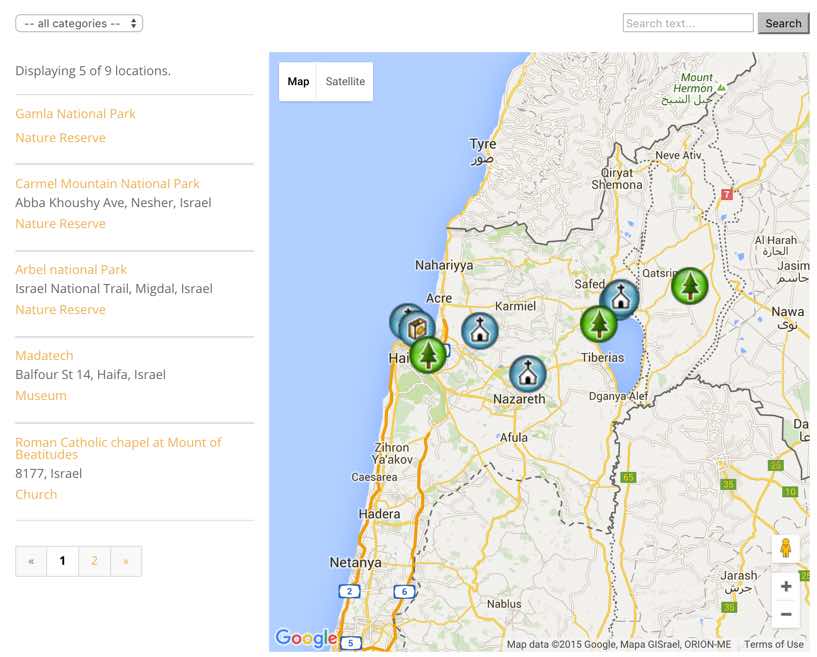
Locations Directory
For example, if you’re making a map of places you want to visit and want to add Notre-Dame cathedral in Paris, you can add the location with a church icon. Then you can give information about the location and why you want to visit. This plugin can also be used to show good hotels, bus stations, airports, pharmacies, etc., to help visitors unfamiliar with a city.
This plugin is better suited than the Routes Manager for those who just want to show individual locations and not a route between them.
Other Travel-Related Plugins
These are all great plugins to have for documenting your travels. There are more ideas you may not have even considered for a travel blog. Here are some possible plugins to add to your travel blog arsenal:
100 Cities

Are you having a hard time coming up with city-specific content for your travel blog? 100 Cities is a free plugin that lets you automatically add city information to your blog posts.
You can choose to display general information (area, population, description), a map, pictures, and accommodation offers from several sources. This can come in handy if you want to quickly inject some additional content into your posts and offer readers a quick visual summary.
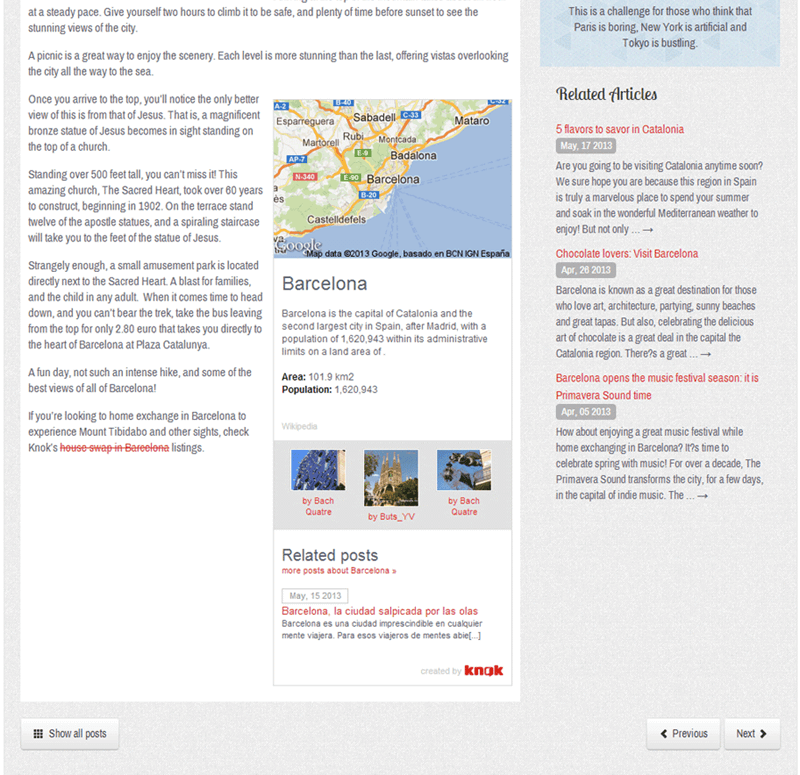
Conclusion
Creating a travel blog and displaying your adventures can be a way to attract a following and possibly make money, if you take advantage of tools that help you create an elegant, intuitive site. This means using plugins that keep readers engage and make them feel like they’re traveling along with you.
Travel bloggers: What plugins are essential for your travel blog?


